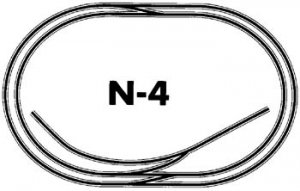Hi Grotto,

For electrical current to flow, it must have a complete circuit. Current leaves a post on the
transformer, through a wire connected to one side of the track (terminal joiner), travels through the track
to the loco wheels, through the wheels to the pickups on that side, through the motor,
through the other side pickups to the other side wheels, back through the track to a
terminal joiner, and back to the other post on the transformer.

The resistance of the motor provides the load which keeps the circuit breaker from
tripping. Any path which allows current to flow back to the transformer without
passing through any load is a "short circuit", and will cause an overload (excessive
current.) :curse:
If you have a true "common rail" layout you may need only one connection on one side
of the transformer. The connections to the other side of the tracks and the other side
of the transformer can be separated through selectors or switches, allowing isolation
of parts of the layout. You can even run two cabs with the common rail connected
to both power packs, with the selectors determining which cab runs which section.
These methods are detailed in the Atlas wiring book, very inexpensive at your LHS.
Sorry for the long-winded post.




